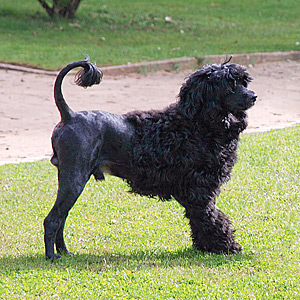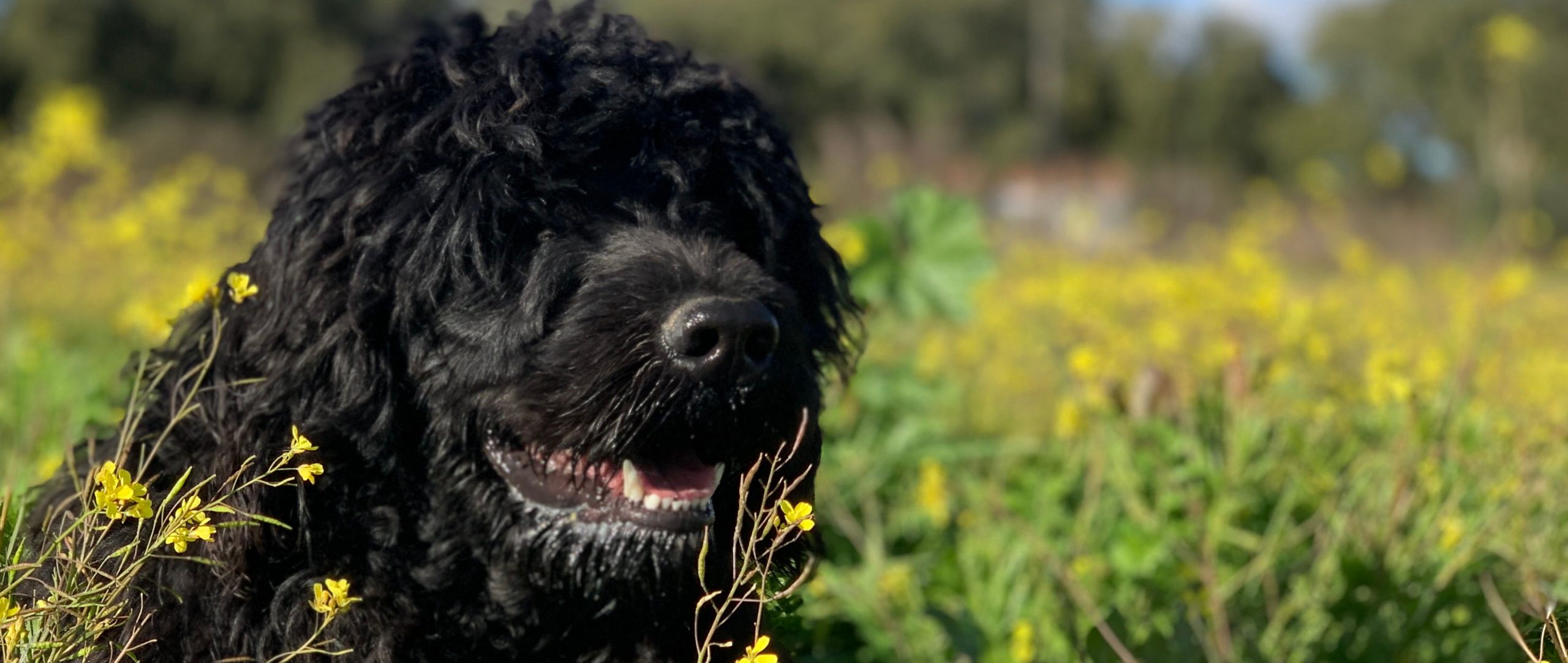History of the Portuguese Water Dog

The Portuguese Water Dog is a quite old breed, once close to extinction, only to re-emerge and become the Portuguese breed with the biggest projection in the United States of America.
A Portuguese Water Dog is first described in 1297 in a monk’s account of a drowning sailor who was pulled from the sea by a dog with a “black coat, the hair long and rough, cut to the first rib and with a tail tuft”. Also, there is an existing record of 1828. It’s an engraving of the landing of El-Rei D. Miguel in Belém’s beach, where a Portuguese Water Dog swims towards the boats. However, it is thought that this breed is quite older then that, towards a period between the V and VII centuries as the introduction of the breed in Portugal. In fact, Manuel Fernandes Marques says in his book “O Cão d’Água”, of 1938, that this breed was known to the ancient romans, that nicknamed it the “Lion Dog” due to the style of hair clipping.
The Portuguese Water Dog was soon adopted by fishermen that considered him as a mate, with the same duties and perks as any other fisherman. Excellent swimmer and diver, this dog was frequently used to recover fish which had come loose from the hooks, and other objects that would fall in the water. Legend says that the dog even saved fishermen (at the time, it was frequent for fishermen to not know how to swim).
The Portuguese Water Dog would also carry messages from boat to boat, and on spare time he was responsible for guarding the vessel. As a reward, the fishermen would split with him the fish and money they would make from commerce, which was given to the elected keeper of the dog. Due to this egalitarian distribution, older fishermen would rent their dogs out so they could make some extra income.
Similar to the dynamic between a dog and a hunter, the Portuguese Water Dog was also invaluable to fishing boats. And so it was until the Industrial Revolution reached Portugal, particularly the country’s fishing fleet, in the beggining of the XX century. The mechanization not only replaced some men, but also the dog’s role in the industry. Radios ensured the communication between boats and the winches made it easy to pull the fishing nets. Gradually, instead of two dogs, one looking at port and another at starboard, boats began to modernize and demit the dogs. Ever losing more territory, the Portuguese Water Dog that once was present in the entire Portuguese coast, took refuge in the Algarve, where the fishing tradition held on.

Parallel to these changes, the Portuguese water dog had it’s debute in the exposition world, around 1930. In spite of diminishing numbers, the value of the Portuguese water dog to fishermen remains the same. It was the interest of Vasco Bensaúde, owner of a fishing fleet, that guaranteed the survival of the breed. Responsible for the standard and the formation of the Portuguese Water Dog Club, he gathered several dogs from across the country and started a breeding program.
In the sixties, the breed’s numbers were very reduced, with estimates pointing to 50 dogs. In 1966, the standard of the breed was created, but it didn’t bring popularity to the animal. In 1981, the breed was acknowledged by the American Kennel Club. In that same year, the Guinness Book of Records stated that the Portuguese Water Dog was the rarest breed of dogs in the world. It was quite quick how the popularity of the breed rose in the USA. Northern Americans also had come in contact with the breed in 1958, and a few years later, in 1972, the Northern American breed’s club was created. The acknowledgement of the breed and disclosure given by the Guinness Book of Records significantly boosted it’s growth around the country.
Nowadays, the Portuguese water dog can still be found in fishermen’s boats. They are also great guards and companions.

